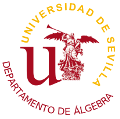(Sigue de las entradas Aprenda un poco de inglés con… Gian-Carlo Rota (1/11), (2/11), (3/11), (4/11), (5/11) y (6/11))
6 Do not worry about your mistakes
Once more let me begin with Hilbert. When the Germans were planning to publish Hilbert’s collected papers and to present him with a set on the occasion of one of his later birthdays, they realized that they could not publish the papers in their original versions because they were full of errors, some of them quite serious. Thereupon they hired a young unemployed mathematician, Olga Taussky-Todd, to go over Hilbert’s papers and correct all mistakes. Olga labored for three years; it turned out that all mistake scould be corrected without any major changes in the statement of the theorems. There was one exception, a paper Hilbert wrote in his old age, which could not be fixed; it was a purported proof of the continuum hypothesis, you will find it in a volume of the Mathematische Annalen of the early thirties. At last, on Hilbert’s birthday, a freshly printed set of Hilbert’s collected papers was presented to the Geheimrat. Hilbert leafed through them carefully and did not notice anything.
Now let us shift to the other end of the spectrum, and allow me to relate another personal anecdote. In the summer of 1979, while attending a philosophy meeting in Pittsburgh, I was struck with a case of detached retinas. Thanks to Joni’s prompt intervention, I managed to be operated on in the nick of time and my eyesight was saved.
On the morning after the operation, while I was lying on a hospital bed with my eyes bandaged, Joni dropped in to visit. Since I was to remain in that Pittsburgh hospital for at least a week, we decided to write a paper. Joni fished a manuscript out of my suitcase, and I mentioned to her that the text had a few mistakes which she could help me fix.
There followed twenty minutes of silence while she went through the draft. “Why, it is all wrong!” she finally remarked in her youthful voice. She was right. Every statement in the manuscript had something wrong. Nevertheless, after laboring for a while, she managed to correct every mistake, and the paper was eventually published.
There are two kinds of mistakes. There are fatal mistakes that destroy a theory; but there are also contingent ones, which are useful in testing the stability of a theory.

